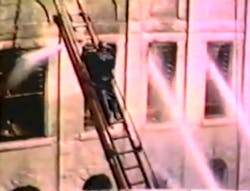Being from a small state like West Virginia has its advantages such as a low cost of living, low crime rate, and a general small-town feel. One downfall is being overlook by many folks and being compared to other big cities.
An example of this is our city is always being compared to Charleston, S.C. This is a huge honor and our cities have many similarities like size, population, and pride. Another similarity between of our two great cities is a great loss of firefighter's lives during a major fire.
The Super Sofa Store Fire in Charleston, S.C., captured the hearts and minds of the entire world when those nine brave firefighters paid the ultimate price and laid down their lives to protect us from fire.
Charleston, W.Va. had an eerily similar large loss of life fire on March 4, 1949. Seven firefighters died in an early morning blaze on Capital Street in downtown Charleston. The Charleston Gazette newspaper gave this account of the early morning blaze:
"In the early morning hours of March 4, 1949 patrolman Wayne Casdorph was on duty near the Woolworth's Department Store on Capitol Street when he smelled smoke and noticed a milky color coming from one of the store windows. He called in the report and shortly thereafter, the old Elizabeth Street Fire Department was the first to arrive on the scene.
The fire, having started in the department store's basement, was deceivingly small at first. One squad was sent into the first floor with hoses, while another squad was making their way down a back staircase to battle the blaze at the source. Unfortunately, no one could predict just HOW badly the fire had already gotten out of control. The first floor gave way, sending firemen crashing down into the burning debris of the basement. Witnesses say men were buried up to their armpits in fiery merchandise, stock, and building debris. Two men, Roy C. Hill and Shawkey Jones, managed to escape out of the basement. In interviews after the fire, Jones relates the sad tale of desperately trying to pull a fellow firefighter from the rubble onto what was left of the first floor, but the man slipping from his grasp and plunging back down into the inferno."
In total, seven firefighters lost their lives in the blaze. Those men are:
- Frank Miller
- Freddie Summers
- James Paul (Jiggs) Little
- T. Frank Sharp
- Richard McCormick
- George Coates
- Emory Pauley
Fifteen additional firefighters were injured, including two who were critically injured: Capt. Charles Clendenin, who was overcome by smoke inhalation, and Carl Wiblin, who suffered severe burns.
Being that the fire happened in 1949 an after-action review or NIOSH line of duty death report was not published for us all to learn from the tragic day. Gathering bits and pieces from the different sources seem to lead me to believe there were many contributing factors to this tragedy.
First was the extended burn time before the officers discovered the fire. Second being the presences of terrazzo flooring that hide the fire until the firefighter's weight caused them to fall through. Both of these suspected factors can be present in today's buildings.
We all should take a moment on this anniversary of this tragic day to review our buildings pre-fire plans and go over burn time estimates. If you find a basement fire in a large, older style building, knowing the layout, construction, and flooring types will allow you to make safer decisions and estimate how long the fire has been burning.
God bless the fallen Charleston, W.Va. firefighters and their families! You will not be forgotten!
Here's a video from the 1949 fire.






